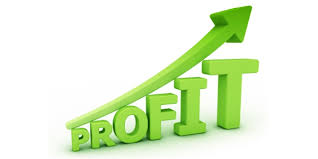$15 Million to Launch? How to Create a Profitable Product
 If your and your team have come up with a brilliant product idea that solves a customer pain point, you’re on the right track. Transforming this into a profit-maker is a more involved process. On average, the cost of a new product launch is around $15 million. Before taking another step, you have to calculate the economics to determine what kind of profits you can realistically expect, and the best ways to deliver value to the customer.
If your and your team have come up with a brilliant product idea that solves a customer pain point, you’re on the right track. Transforming this into a profit-maker is a more involved process. On average, the cost of a new product launch is around $15 million. Before taking another step, you have to calculate the economics to determine what kind of profits you can realistically expect, and the best ways to deliver value to the customer.
Estimate Product Cost
It doesn’t matter whether you’ve come up with a new flavor of ice cream or a robotic guard dog. Before you can set price and estimate profit, you have to have a very good idea of what it will cost you to produce it, and in realistic numbers. Depending on the product and your business, you could be looking at an initial production run of 100 or 100,000 units. You may need patents, legal advice, new equipment, additional labor or training, new materials, and new processes for production, shipping, and quality control. Hopefully, you’re familiar enough with your industry to make a fairly accurate assessment of all these things.
Test Your Market
You also have to thoroughly test your new product with your target market. Offer demos, perform online surveys, post videos, or build a prototype and conduct focus groups with your demographic. In fact, you should do everything possible to test your product with the people whom you expect to purchase it. Get their feedback to determine what features they like or don’t like, how it compares to similar products, and what your customers would feel comfortable in paying for it. If your customers don’t feel it provides enough value, something has to change.
Package Your Product
A crucial consideration in your product launch planning should be the packaging you’ll use. It has to protect the product from damage or tampering during shipping or when sitting on store shelves. For products such as high-end tech, you might want something sturdier but still transportable. Custom-made packaging solutions in Salt Lake City, Utah, or wherever is more local to you, might satisfy on all counts. Packages also have to be attractive and distinctive if customers are going to take notice. Find ways to differentiate your product packaging without making it seem strange. Labels, fonts, color schemes, and images should all reflect your branding and catch the eye. Don’t forget that your goal is to show content that influences the purchase decision.
Establish Metrics
Set yourself some realistic goals as you move forward. Establish metrics that will help you to gauge your momentum as well as the results you’re achieving, both prior to and after marketing campaigns being. These have to measurable quantities or dollar amounts that are applied consistently and checked regularly. Continue gathering feedback as the product hits the market. If you aren’t getting the results you hoped for, you’ll be able to detect this early on and make adjustments. Even if you’ve invested money in your new product and it doesn’t take off, don’t be afraid to scrap the project. Not every idea will take off, no matter how much research you put into it. The biggest companies come up with some failures. Stubbornly supporting bad concepts will only cost you more and undermine your brand.
If you can forecast the results of all your efforts by the numbers before you even get started, you’re much less likely to go astray. You’ll also find it may be a bad idea to bet everything on one product, as you will never have a guaranteed success. The best way to ensure profits is coming up with educated strategies that assess risk and allow adjustment for customer expectations.
Hannah Whittenly is a freelance writer and mother of two from Sacramento, CA. She enjoys kayaking and reading books by the lake.

 Delicious
Delicious Digg
Digg StumbleUpon
StumbleUpon Propeller
Propeller Reddit
Reddit Magnoliacom
Magnoliacom Newsvine
Newsvine
Comments
Post new comment